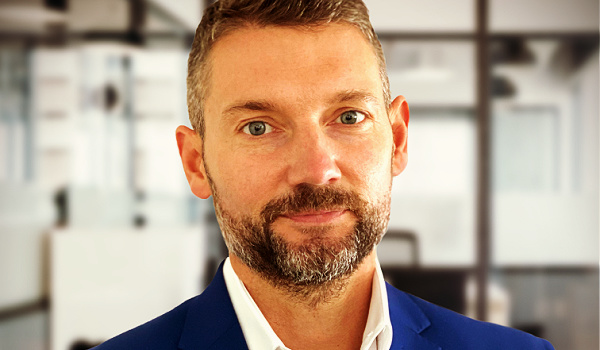Technology alone is not a panacea for advisors who want to grow their practice.
Many wealth management firms have experienced technology providers who have oversold their software’s ability to catalyze growth in both AUM and number of clients, according to a panel of technologists who spoke on Wealth Mosaic’s webinar, “Driving Growth in Wealth Management with Technology.”
“I think in some ways technology has done a disservice to wealth management firms,” said Ryan George on the panel and Chief Marketing Officer at Docupace. “We’ve oversold what we have to offer in technology without a plan to utilize that technology, and technological ‘transformation’ is a term we’ve used to describe incremental improvement in terms of making things more efficient.”
Creating concrete plans to implement and use new technology can unlock the growth potential and efficiencies that software and tools offer, the panelists said.
Tom Westhoff, Vice President of Global Sales at Practifi, a business management platform for the wealth management industry, named technology as a primary challenge for independent firms, particularly RIAs.
“When you see a firm break away from a wirehouse where they had access to 25 different tools on their desktop, you soon find out that when they leave, they don’t have those tools anymore,” Westhoff said. “They have the charts made by people like (Michael) Kitces with 100 different fintechs. How do they make sense of that? Not only do you need the technology in place, but you also need someone sitting at the center of an ecosystem to help make sense of that technology. People who understand the market, the clients’ lives, and the impact that financial tools have on clients.”
Independent advisors embrace technology because they have a natural curiosity or belief that they can grow their practice and better serve their clients by accessing new software and tools, said Westhoff.
But the outcome of implementing new technology can fall short because many fintechs stop short of helping their clients fully implement and use software, said George.
“Once the sales team signs a contract and then leaves, the deliverable comes and suddenly the technology doesn’t do everything they said it would do,” George elaborated during the webinar. “When most RIA firms are spending less than $50,000 a year on technology, they need to be able to maximize every dollar spent. We see companies like Docupace and Practifi trying to fill in the gaps and be the connective tissue between technology, so it doesn’t cause friction.”
In other words, advisors shouldn’t settle on “out-of-the-box” or “set-it-and-forget-it” technology solutions, said the panelists.
“For firms that are considering software, they need to understand more than the technology itself,” shared panelist, Anthony Stich from InvestCloud. “They need to understand who is behind the software and what kind of culture they’ve built around innovation, design and customer success to make sure they are helping you maximize value out of software.”
At Practifi, Westhoff believes that financial services companies, especially independent wealth management firms, shouldn’t need to hire an army of people to manage their technology.
“At Practifi, we have an entire team of people thinking about your technology, you shouldn’t,” Westhoff said. “That’s why you want to work with technology companies who don’t put themselves at the center of your business, you want them to act as connective tissue bringing together the best of what each platform does and drive efficiencies.”
According to the panelists, deep integrations that allow data to move freely and efficiently between technologies are important, as well as technology that enables the recording, storage and analysis of deep data about clients, vendors and the wealth management firm itself.
Westhoff believes that advanced data collection and management is a competitive advantage that will help advisors grow.
“We see people trying to leverage technology to expand their service offering,” he said. “We believe that when advisors are able to get more niche with their client set and have data to identify and support where their most profitable clients are, it will drive more aggressive assets under management growth. In firms where they can hone in on data and really deliver on that, you’re starting to see exponential growth.”
The same data that allows advisors to hone in on their most profitable clients can also permit wealth management executives to discover which areas of their firm are most efficient, versus which areas are most ripe for improvement and innovation, said Westhoff, giving them insight into where they can get the most bang for their buck in implementing new technology.
Westhoff also argued that wealth management firms are doing more harm than good when they take a scattershot approach to growth through implementing technology.
“I think where we have found success is when you can partner with a firm to create something targeted and not use ‘big bang implementation’ which is trying to solve everything from day one,” he said. “We ship Practifi with a certain number of out-of-the-box, pre-built workflows, not because we are brilliant, but because we know that a lot of our clients—wealth advisory firms— need to automate these steps because they are a problem and cause friction within their firms. So we sit together in a room and discover what is the art of the possible. Let’s strip it down and start with one thing, one automated workflow that moves the needle toward growth for your firm.”
“Just one and then there’s going to be a general momentum. Then you start feeding into it and it becomes cultural. It starts with solving one problem to move the needle in a measurable way,”he continued.
Westhoff urged fintech firms to think of themselves as partners to the wealth management industry and not peddlers, or vendors to it.
“If you start at the design phase thinking from a perspective of ‘can an advisor, use this intuitively and proactively to drive growth,’ you’re going to end up with a good system,” Westhoff shared. “That’s the perspective where these conversations need to start, but that’s also why some technologies fail: they’re thinking about the process in reverse. They think they have the best product, so advisors should just use it, and then they have to unwind it because it’s not really the best product.”
This article was based off The Wealth Mosiac webinar, “US WealthTech Talks: Driving Growth in Wealth Management with Technology” on December 4, 2021.








